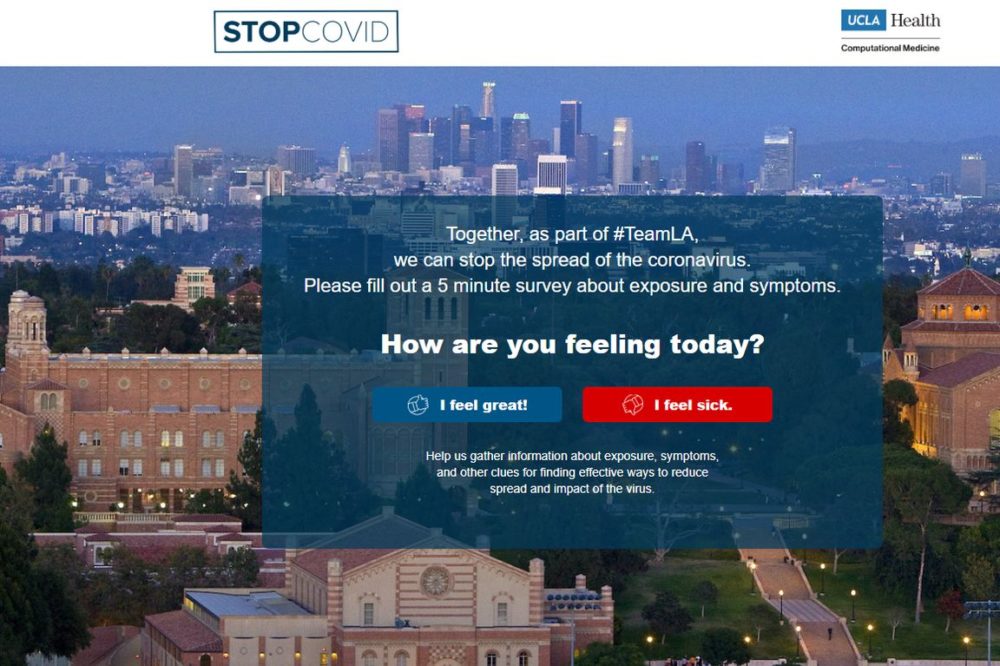By Leticia Ortiz. A team of UCLA researchers has launched Stop COVID-19 Together, a web-based app that will enable the public to help fight the spread of the coronavirus.
Through the site, anybody can take a brief survey that covers basic demographics, whether they have symptoms and their possible exposure to COVID-19. The system aggregates users’ responses to help the UCLA team find ways to reduce the spread of the virus, and to try to protect the health system from being overloaded.
“The key contributors to Stop COVID-19 Together are the members of the public who contribute data to the effort, which is designed to predict the spread of COVID-19 throughout the community and to assess the effectiveness of current measures in that community, including physical distancing,” said Dr. Vladimir Manuel, a clinician, medical director of urgent care at UCLA Health and one of the project’s leaders. “We are extremely grateful to everyone who is contributing.”
The app was created by UCLA experts from a range of fields, including engineering, data science, clinical medicine, epidemiology and public health. The project is an initiative of the AI in Medicine program at the UCLA Department of Computational Medicine, which is part of UCLA Health.
“One of the most pressing challenges with the coronavirus pandemic is the lack of information,” said Eran Halperin, a UCLA professor of computational medicine, computer science, human genetics and anesthesiology, and another leader of the project. “We do not have a clear understanding of how many people are infected, where they are or how effective the measures that we are taking to slow the spread have been. And we don’t know how much strain the virus will put on our local hospitals in the near and more distant future.”
The system will build a map of possible hotspots where there may be a higher risk for accelerated spread of the disease. Identifying hotspots will be critical for helping hospitals and medical centers reduce the risk of becoming overloaded as the number of people with COVID-19 increases. The system will also inform the public where hotspots are located, and it is using artificial intelligence to predict where and when the disease will spread. That information could be useful to public officials — letting them know, for example, how effective physical distancing is in slowing the spread.
“Our system will use machine learning tools to answer these questions and make predictions that will help us as a society be more prepared to fight this disease,” said Jeff Chiang, a data scientist on the team.
Follow #TeamLA and #stopcovid19together on social media.
This article originally appeared in the UCLA Newsroom, April 7, 2020, and is re-posted with permission in the UC IT Blog.







